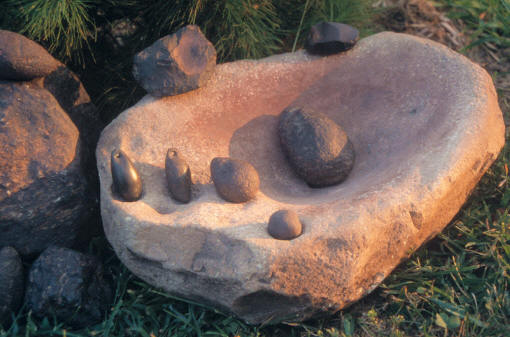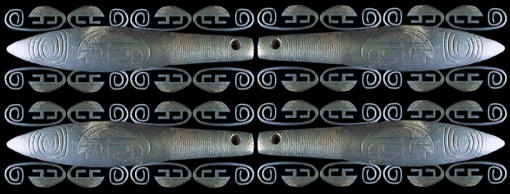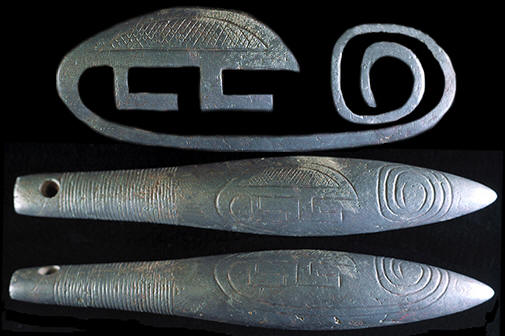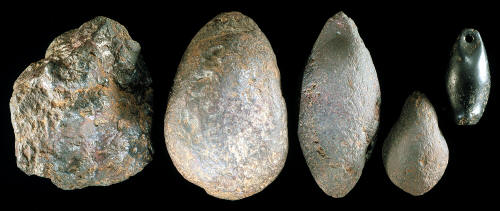|
||
|
||
|
"Plummets---A group of prehistoric-like objects of stone, bone, shell, hematite ore, copper and other materials the origin and use of which have been much discussed."---------1912, Frederick Webb Hodge, "Handbook of American Indians North of Mexico," part 2, p. 267. "Personally, I have no doubt that these stones (plummets) were objects of utility designed for several practical services in the economy of the Californian aborigines."---------1912, Warren K. Moorehead, "Stone Ornaments Used By Indians In The United States And Canada," p. 165. "Great quantities of "plummets" or pendants, ornaments, mostly of hematite, have been picked up from the surface (on the Poverty Point site, NE Louisiana)."---------1930, Henry Clyde Shetrone, "The Mound Builders," pp. 379, 456. "Based upon logic it may be deduced that plummets were used in, on, or about bodies of water (in reference to plummets found in the lower Illinois River valley)."------1961, Gregory Perino, "Tentative Classification Of Plummets In The Lower Illinois River Valley," Central States Archaeological Journal, No. 2, p. 43. "The most common type (of plummet) in the Mississippi Valley is the hematite grooved plummet---."------1975, Ben Thompson, "Plummets," Central States Archaeological Journal, No. 2, p. 61.
The first time anyone ever tried to describe these unique objects they probably used the descriptive term plummet. Their uncanny resemblance to the modern day builders plummet or plum-bob is remarkable. Most plummets have a basic tear-drop shape. However, there are highly stylized versions that have been found in widely separated areas of the country. In California they are often referred to as charmstones but they have also been described by using the descriptive words plummet and plum-bob. Almost all plummets maintain a round cross-section and range in size from less than one inch (2.6cm) to more than six inches (15.2cm) long. |
||
|
Plummets have been found in large numbers in the United States. People have been writing about them for well over a hundred years and in the past they were sometimes referred to as "problematical objects." Plummets have been found in every imaginable round and tear-drop shape and in a wide range of sizes and quality of craftsmanship. They are complex objects which means they were probably used for more than one purpose. |
||
|
In the central Mississippi Valley, plummets date from the Middle Archaic to the Late Woodland period. Drilled Godar plummets are the earliest examples. They have been found with side-notched points, t-drills and bannerstones. Grooved plummets like the Snyders type represent the most recent examples. In the central Mississippi Valley, the estimated age for all plummets is somewhere between 5,000 and 1500 years. In California, the archaeological record also records the earliest plummets as being drilled and the later examples grooved or having knobs on the ends. |
||
|
In California, plummets are more often referred to as charmstones even though they are similar in shape to the land surveyors plum bob and builders plummet. The same discussion, concerning their use, has continued there as it has in the central Mississippi Valley. Many of the plummets found there have a considerable amount of battering and breakage and are found on village sites in refuse pits. But there are also other examples that are finely crafted and found with burials that seem to have been made for ritual purposes. |
||
| CONTINUE ON TO PAGE TWO | ||
|
"REFERENCES"
1896, Fowke, Gerard, "Stone Art, (Plummets)" Thirteenth Annual
Report of the Bureau of Ethnology, pp. 110-114. |
||





